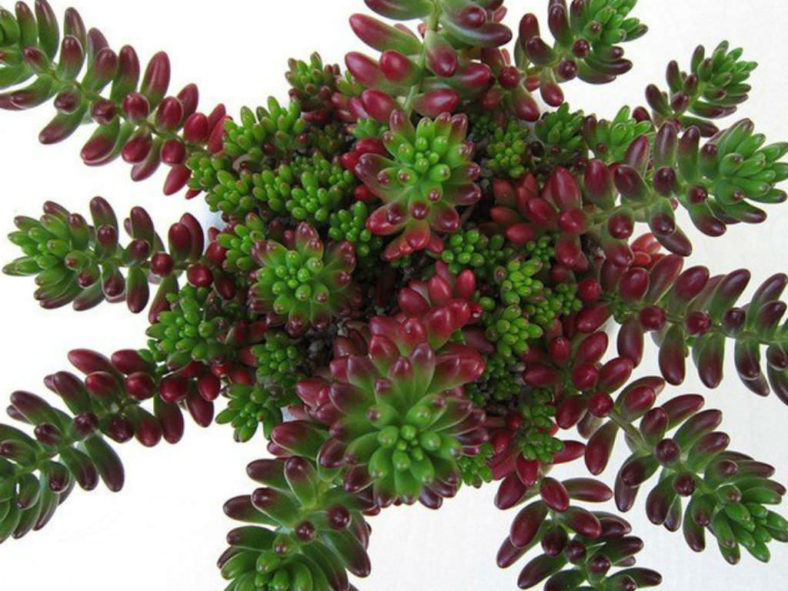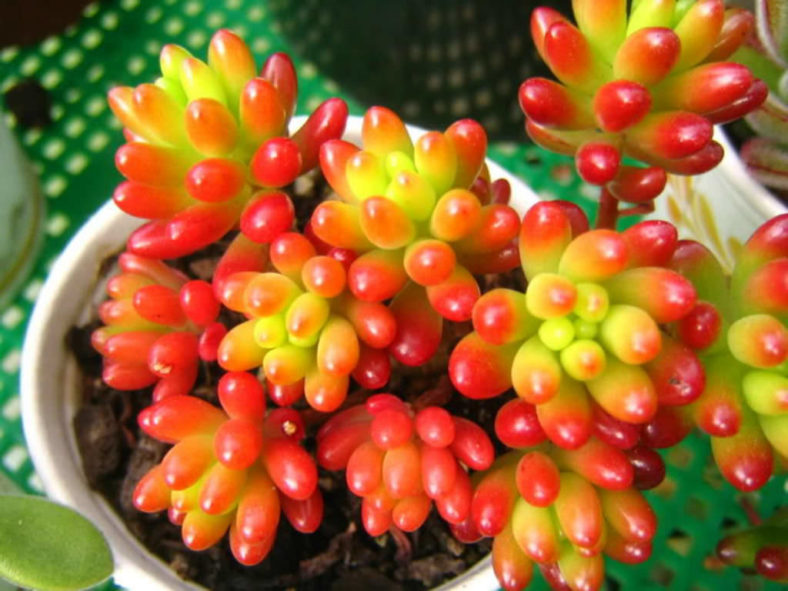Scientific Name
Sedum × rubrotinctum R.T.Clausen
Common Name(s)
Jelly Bean Plant, Jelly Bean, Pork and Beans, Brown Beans, Christmas Cheer, Banana Cactus
Synonym(s)
Sedum rubrotinctum
Scientific Classification
Family: Crassulaceae
Subfamily: Sempervivoideae
Tribe: Sedeae
Genus: Sedum
Etymology
The specific epithet "rubrotinctum" (pronounced "roo-broh-TINK-tum") means "red-tinged". It refers to the red color that the leaves of this species develop, especially when exposed to intense sunlight.
Origin
Sedum × rubrotinctum originates in Mexico. It is known only in cultivation and appears to be a garden hybrid of Sedum stahlii, with Sedum pachyphyllum most likely as the other parent.
Description
Sedum × rubrotinctum is a popular succulent with sprawling stems covered in tightly packed, glossy green leaves that are strongly flushed with bright red when exposed to full sun. It can grow up to 8 inches (20 cm) tall. The leaves are bean-shaped, arranged spirally around the fleshy stems, and can measure up to 0.8 inches (2 cm) in length.
The small, yellow flowers are star-shaped and appear in clusters during the spring.

Cultivars of Sedum × rubrotinctum (Jelly Bean)
How to Grow and Care for Sedum × rubrotinctum (Jelly Bean)
Hardiness: USDA hardiness zones 9a to 11b: from 20°F (-6.7°C) to 50°F (10°C).
When growing Sedums, keep in mind that these plants need very little attention. They will thrive in conditions where many other plants thrive, but do just as well in less hospitable areas. They are ideal for that part of your yard that gets too much sun or too little water to grow anything else. Sedum is commonly called Stonecrop because many gardeners joke that only stones need less care and live longer.
Sedum is easily planted. For shorter varieties, simply laying the plant on the ground where you want it to grow is usually enough to get it started. The plant will send out roots from wherever the stem touches the ground and the root itself. If you want to ensure the plant starts there, add a very thin layer of soil.
For taller varieties, you can break off a stem and push it into the ground where you want to grow it. The stem will root very easily, and a new plant will be established in a season or two.
Learn more at How to Grow and Care for Sedum.
Links
- Back to genus Sedum
- Succupedia: Browse succulents by Scientific Name, Common Name, Genus, Family, USDA Hardiness Zone, Origin, or cacti by Genus
Photo Gallery
Click on a photo to see a larger version.


